A residential area of \u200b\u200blilies lilies looks in a royal - the beauty of strong and tall flowers overshadows the rest of the plants around. We have gained the greatest popularity of tubular hybrids - very bright and most fragrant representatives of the Lily family. We will talk about the intricacies of landing and care for tubular lilies further.
Tubular lilies: description
Herbal perennials of lily tubular - frequencies of flower beds of Russian gardeners. It is a pleasure to grow, since this kind of better than the remaining lily plants is adapted to changeable weather conditions in our parts, as well as steadfastly tolerates precipitation and a long lack of bright sunlight. In addition, these royal plants, "parents" of which are considered hybrid Asian lilies, are known for their lush and very long blossoms.
A distinctive feature of tubular lilies, according to which they still recognize them among other hybrids, is the color of their bulbs: red-barded, yellow-violet, dark purple up to black, in rare cases white. Lukovy themselves are large, rounded with a large number of loose juicy scales.
Flowers originating from the bulbs are actively growing, reaching 120 - 190 cm in height. Wax dense buds of individual specimens, opening, exceed 17 cm in the diameter! Spectacular lilies nicknamed tubular due to their tubular and funnel-shaped gramophone flowers, the brushes of which hold strong high stems. If we talk about colors, then such a female of the paints need to still search - tubular lilies are white, bordees, pink, red, orange, yellow, coral, dark purple, with divorces, to the speck. There are 6 petals growing in noah flower flowers in the terry specimens of petals. The image of a lonely plant lanceal or linear leaves is completed - elongated and narrow.
Buds of tubular lilies are combined at 8 - 20 pieces into large brushes, bloom alternately. The duration of flowering of each flower is about a week. The spectacular action does not have clear terms: sometimes tubular lilies bloom the buds during the month, sometimes during the summer, and in some cases the flowering is also capturing September. Flowering itself can begin from June to October. In the photo Lovely tubular lily Pink Perfeksch variety:
Features of the choice of bulbs of tubular lilies
Successful cultivation of tubular lilies begins with the choice of a suitable planting material. It is bought in the fall and immediately planted. The choice is stopped on large, dense and fleshy copies. Very dry and tough or, on the contrary, too soft bulbs with signs of rotten or mold lesions are set aside. If possible, the bulbs of lily tubular feel. If a strong, dense and pretty elastic copy, buy without thinking.
There is one more very important point - too small bulbs of lilies are not fossible, so choose the instances of at least 3 cm in diameter. Also pay attention to the packaging - it is obvious that in a very strain pack, which was incorrectly transported or stored, may be damaged boarding material.
Varieties of lily tubular
The number of varieties of plants increases every year. The tubular lily is so beautiful that breeders without tired work on the replenishment of the family of lyrable new spectacular hybrids.
We suggest you admire the selection of the most impressive varieties of lily tubular.
Lily Tubular African Quen
This is a catchy, defiantly beautiful plant, blooms in July - August. Stem Lilius grows a magnificent "cap" of 15 - 20 large juicy-orange buds with a dark garnet strip on the outside of petals. Considering that the height of the plant sometimes reaches 180 cm, the spectacle of his rich flowering leaves no one indifferent. The plant decent tolerates return freezers and develops well, even if the soil is somewhat screamed. African Queen poisonous for cats.
Lily Tubular Golden Spling
Translated from English, the name of this variety sounds like "Golden Luxury", and the plant fully corresponds to this epithet. Past Lily Golden Splingdor is difficult to go through: at least for a minute, but you delay in a high stem (about 120 cm) with large rich yellow flowers that smell spicy and very sweet. Yellow tubular lilies of this variety are growing without problems in containers and spectacularly look in the form of a bouquet. Flowers plant from July to August and resistant tolerate freezing. Beauty is dangerous for small pets due to toxicity.
Lily tubular regale
The buds of this high (up to 180 cm) of the state plant are remembered due to the delicate unusual coloring of the petals and the wondrous odor. Tubular lily tube flowers white marked with a yellow spot at the base inside and bright pink stripe outside the bud. Flowering falls in July. The plant gives the surrounding its unsurpassed beauty and does not require much in return. It is enough to plant the lily of this variety in a partially shaded place in a well-drained soil and provide him with abundant irrigation. Flower poisonous.
Lily tubular pink Perfex
A plant that often reaches the height of an adult growth, created for a curb, mix bearder or container. On one stem, up to 15 - 20 flowers of the exquisite dark pink shade are crowded. To increase the entertainment of landing, the lilies of this variety are located in the garden with groups of 3-5 bulbs. Juicy pink tubular lilies appear on the plant from July to August. The flower has an external immunity to various fungal diseases.
Lily Tubular White Planets
The hybrid plant, though not so high as its other fellows (up to 120 cm in height), but there is no equal on beauty. The lily of this variety has snow-white inflorescences with a greenish tinge at the base awarded up. A strong frost-resistant plant blooms in July, spreading a thin gentle fragrance in the garden. Prefers partially shaded places and abundant watering. In the first year after landing needed shelter.
Growing tubular lilies
With tubular hybrids, lilies will not be problems if you follow two important recommendations:
- It is safe to strengthen the plant during strong frosts, otherwise the cold will destroy the floral kidney, which is formed much earlier than the flowering period begins.
- Planting the bulbs solely into an alkaline ground, because in the acidic medium the plant will develop very slowly due to the shortage of nutrients.
Choosing a place for landing tubular lilies
Landing tubular lilies begins with the search for the most suitable place in the garden, where the flower will be good and cozy. The bulbs of beautiful plants got into our gardens from afar - China and Japan are considered their homeland. There, Lilylands grow in warm conditions, without having a lack of sunlight. Dampness and complete shading they do not tolerate perfectly. It is necessary to try to provide tubular hybrids as the same conditions as in the native edges. For this reason, Lilia does not recommend landing where they will be blown up trees and bushes, as well as near the high walls that will be thrown into a thick shadow on light-minded flowers.
The optimal place for tubular hybrids is an open flower bed away from buildings, dense thickets of bushes and trees. Despite the fact that Lily loves the world, all day is under the sun, it is not necessarily enough - enough 5 - 7 hours. Do not lose sight of the fact that in the homeland of lilies these plants are most often found in the rocky area with a minimum percentage of humus. Plant Stems always surround large and small stones, providing a free air flow. Best of all tubular lilies will feel at the elevation of the alpine slide, decorated with rockwall stones.
Soil for tubular lilies
As already noted above, the plant prefers the soil with a neutral or alkaline medium. Heavy peat soil and scooped soil is not the most suitable option for lily. They absorb a large amount of water, quickly floss and slowly dry. In such conditions, lilies are sick and dying. For the landing perfectly suitable, sandy, sandy or limestone earth. An acidic soil can be made neutral with ash or limestone, if you add them to small portions when planting and fertilizing lilies.
Landing tubular lilies
To determine how deeply immerse the lily bulb into the ground, multiply its size in the diameter 3. Completely optionally, to calculate this figure to the last millimeter, it is enough to know what exactly the soil will grow flowers. Sutting off the bulbs of tubular lilies into sandy soil, the depth can be slightly increased and, accordingly, decrease, if the soil is sublinous.
How is the landing of bulbs:
- Prepare the soil at the selected area. Take the sandy ground with the addition of 4 - 5 parts by humus, as well as 1 parts of fine-sided chopenka and gravel. Here, put a nitrogen-containing fertilizer, which usually take peat and compost, diluted land (2-3 parts). Lastly, it is placed in this mixture, which will provide the soil the necessary alkaline environment.
- Dock deep well (about 25 cm).
- Push up the pit with a finished earthy mixture until you get the necessary depth to land the lily bulbs.
- Stick the bulb in the well and pour it with a small number of finished land.
- Pour the bulb cool water.
The landing time is determined by the territorial indicator: in the middle lane of Russia, the optimal period for the landing activities is considered to be autumn, and in the Baltic States, the capital and region - the end of summer or beginning of September. The time left before the arrival of frosts is used at the maximum: they will type forces and form the root system. In the first summer, after landing, Lily, undoubtedly bloom, but not in full force.
Care of tubular lilies
When after landing or transplanted quite a bit of time, the plant does not need fertilizer and increased attention. However, as the stems of the garden queen increases, it is necessary to care for it more carefully.
With the arrival of spring with the appearance of the first sprouts of lily from the larger soil, they immediately fertilize any nitrogen-containing mixture. Do not forget about the organizing - the plant will not refuse to compost or humus. The mineral feeding period falls on any season, except for spring. If suddenly the frost and the temperature fell to - 3 0C, not yet strengthened stalks of the lily plant hide under a special tissue cape.
In summer, when the plant is increasing flowering buds, it is maintained by mineral and organic nitrogen-containing mixtures. Experienced gardeners are recommended in mid-July to carry the soil with hay or straw. First, this is a real obstacle for weeds, secondly, allows the soil for a long time to hold water. Other gardeners hold other opinions: it is possible to do without mulching, if 2 - 3 times "poison" with a cool water, when summer was very hot, and pull the high weed grass as it appears. From lily, which is already fighting, remove fruit boxes that absorb nutrients necessary for normal flower growth.
In the period of pouring autumn rains, the ground part of the lily tubular is cut to the level of the earth's surface. Then the plant "treat" ashes, which will increase its resistance to frost. Pennets in the ground are covered with a dense material that does not let water. The construction foamed polyethylene with a thickness of 10 mm is perfect for this purpose. The shelter perimeter is 1 square. m. for one lily.
Trusting tubular lilies
The plant needs pruning in several cases:
- flowering completed;
- got sick (puments, dried) leaves or stem;
- when cleaning on the eve of winter.
Coloros are removed to prevent the seed aging, as it takes the main forces for growth in the lily itself and does not mostly affect her decorative qualities. It is covered so that the location of the cut is protected by leaves, which significantly reduces the risk of infection during watering. At the sunset of the summer, the leaves of the tubular lily weaken, losing its bright shade. This is a gardener signal that trimming time has come: everything is superfluous to be removed at a distance of 1 - 3 cm from the ground. Thanks to this procedure, the bulb goes faster on peace, and in the spring with ease will be built by new leaves.
Reproduction of tubular lilies
The method of reproduction of this type of lilyer with seeds is usually not practiced by gardeners. This is a troublesome procedure, which is carried out by breeders, creating new varieties. On their own, it is possible to reproduce the bulbs on their own by the tubular lily.
If the plant lives on a plot of about 3 to 4 years, a whole "family" of bulbs is formed under it (about 5 - 6 pieces). They are digging, divided and searched separately. How many tubers are underground, prompts the number of tubular lily stems. It is best to engage in the reproduction of lilies in the fall. Spring is also suitable, but at the same time the height of the parent plant should not exceed 5 - 10 cm, otherwise the tubers do not fit.
Reliable to plant tubers immediately after separation. Large bulbs will delight you with their flowering in the same summer, and smaller - only a year later. Remember that the development and growth of tubular lilies depends largely on the quality and composition of the soil. Plants readily respond with lush flowering on manifested love and care.


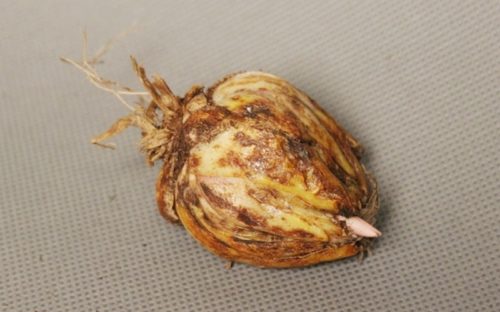
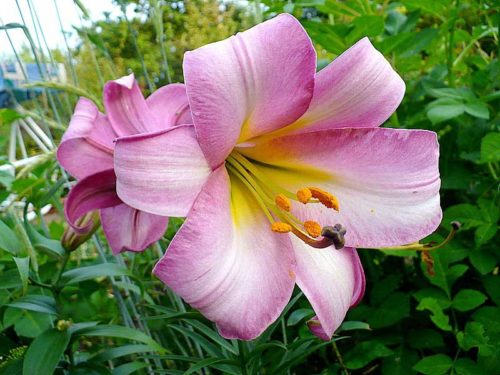
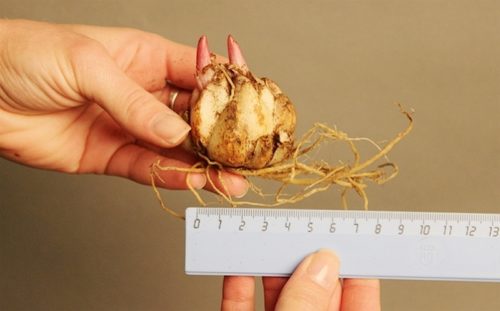
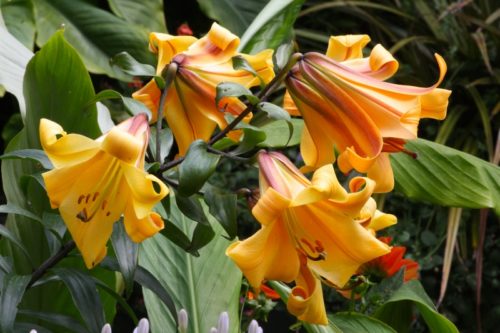
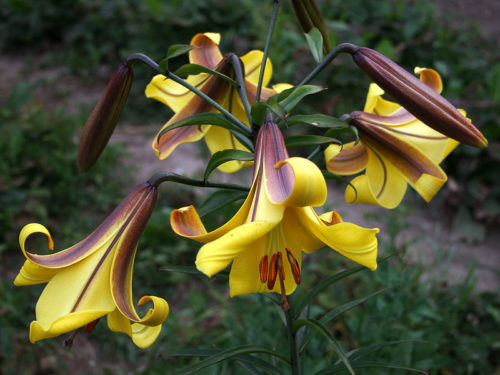
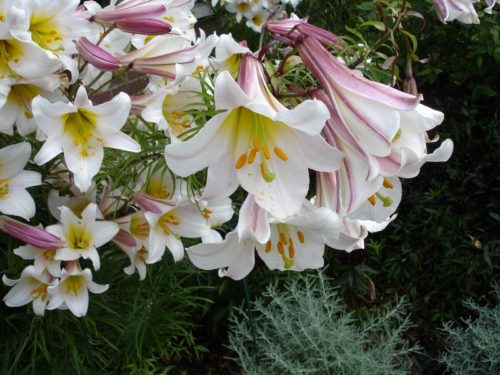
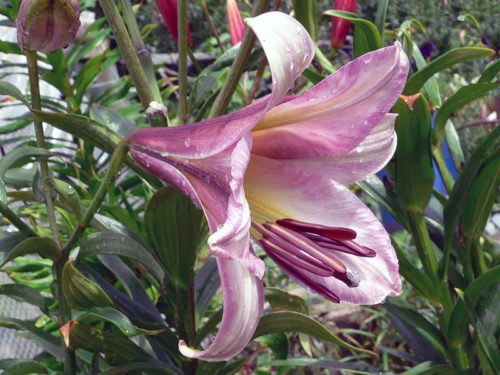

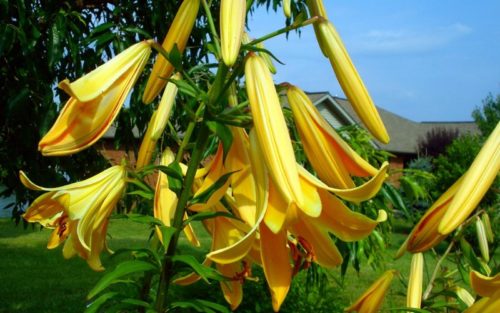
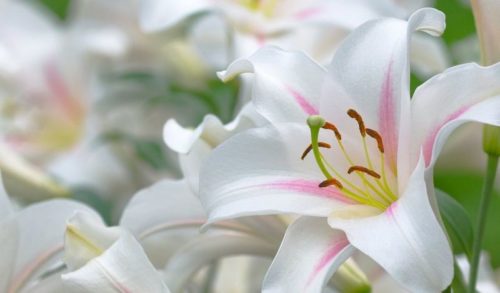
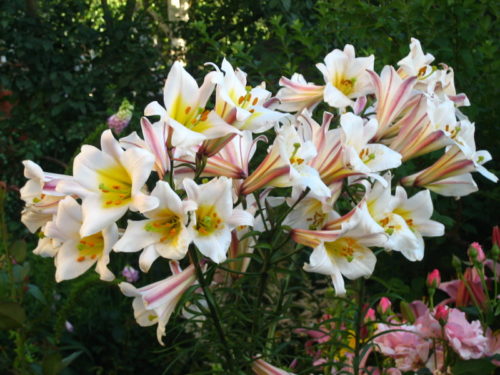
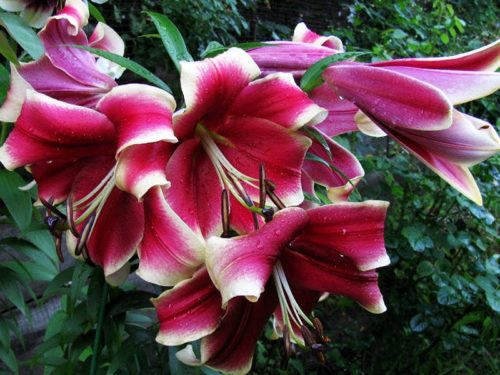
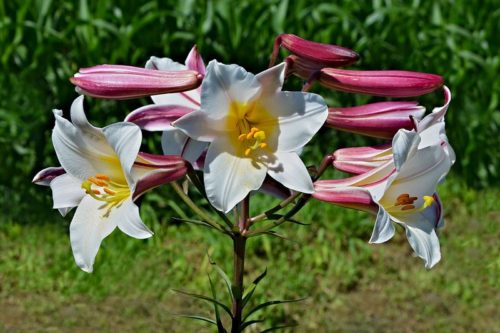













 Start a discussion ...
Start a discussion ...